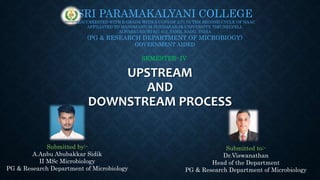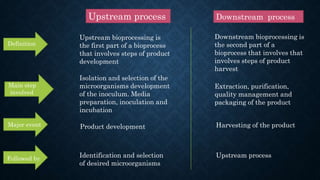Upstream bioprocessing involves steps like isolation and selection of microorganisms, media preparation, inoculation and incubation. Downstream bioprocessing involves steps like product harvesting, extraction, purification, quality control and packaging. Major upstream steps are formulation of fermentation medium, sterilization, inoculum preparation and fermentation. Downstream steps include cell disruption, solid-liquid separation, concentration, purification, formulation and quality monitoring. The overall process aims to isolate the desired product from fermentation broth in pure form through various unit operations.













































